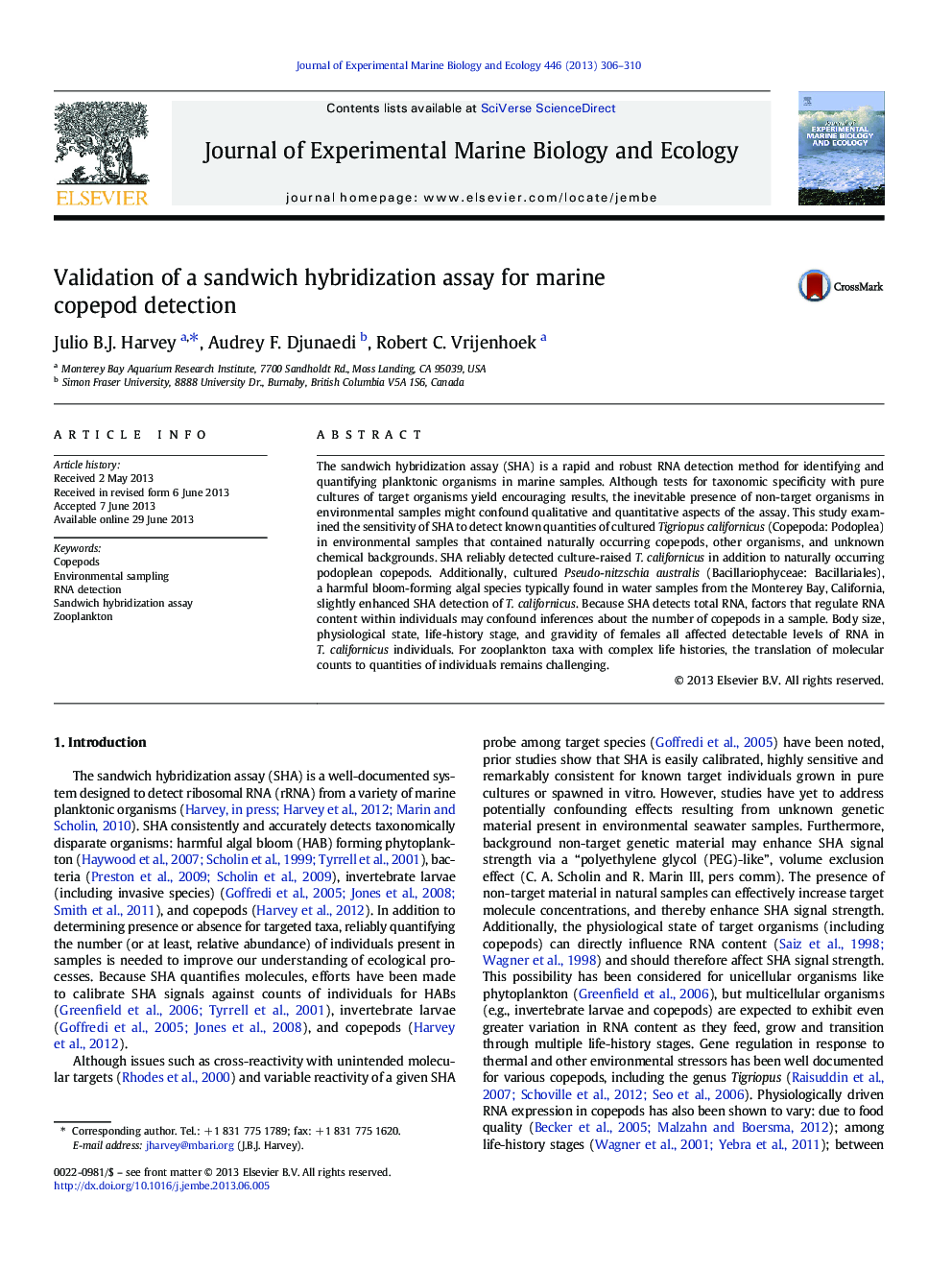| Article ID | Journal | Published Year | Pages | File Type |
|---|---|---|---|---|
| 4395736 | Journal of Experimental Marine Biology and Ecology | 2013 | 5 Pages |
•We evaluate a molecular target detection assay for marine zooplankton.•Environmental background and Tigriopus californicus physiology affected results.•Naturally occurring copepod targets were detected in environmental samples.•Non-target organism presence slightly enhanced target RNA signal strength.•Tigriopus californicus culture age and life-history stage affected RNA levels.
The sandwich hybridization assay (SHA) is a rapid and robust RNA detection method for identifying and quantifying planktonic organisms in marine samples. Although tests for taxonomic specificity with pure cultures of target organisms yield encouraging results, the inevitable presence of non-target organisms in environmental samples might confound qualitative and quantitative aspects of the assay. This study examined the sensitivity of SHA to detect known quantities of cultured Tigriopus californicus (Copepoda: Podoplea) in environmental samples that contained naturally occurring copepods, other organisms, and unknown chemical backgrounds. SHA reliably detected culture-raised T. californicus in addition to naturally occurring podoplean copepods. Additionally, cultured Pseudo-nitzschia australis (Bacillariophyceae: Bacillariales), a harmful bloom-forming algal species typically found in water samples from the Monterey Bay, California, slightly enhanced SHA detection of T. californicus. Because SHA detects total RNA, factors that regulate RNA content within individuals may confound inferences about the number of copepods in a sample. Body size, physiological state, life-history stage, and gravidity of females all affected detectable levels of RNA in T. californicus individuals. For zooplankton taxa with complex life histories, the translation of molecular counts to quantities of individuals remains challenging.
